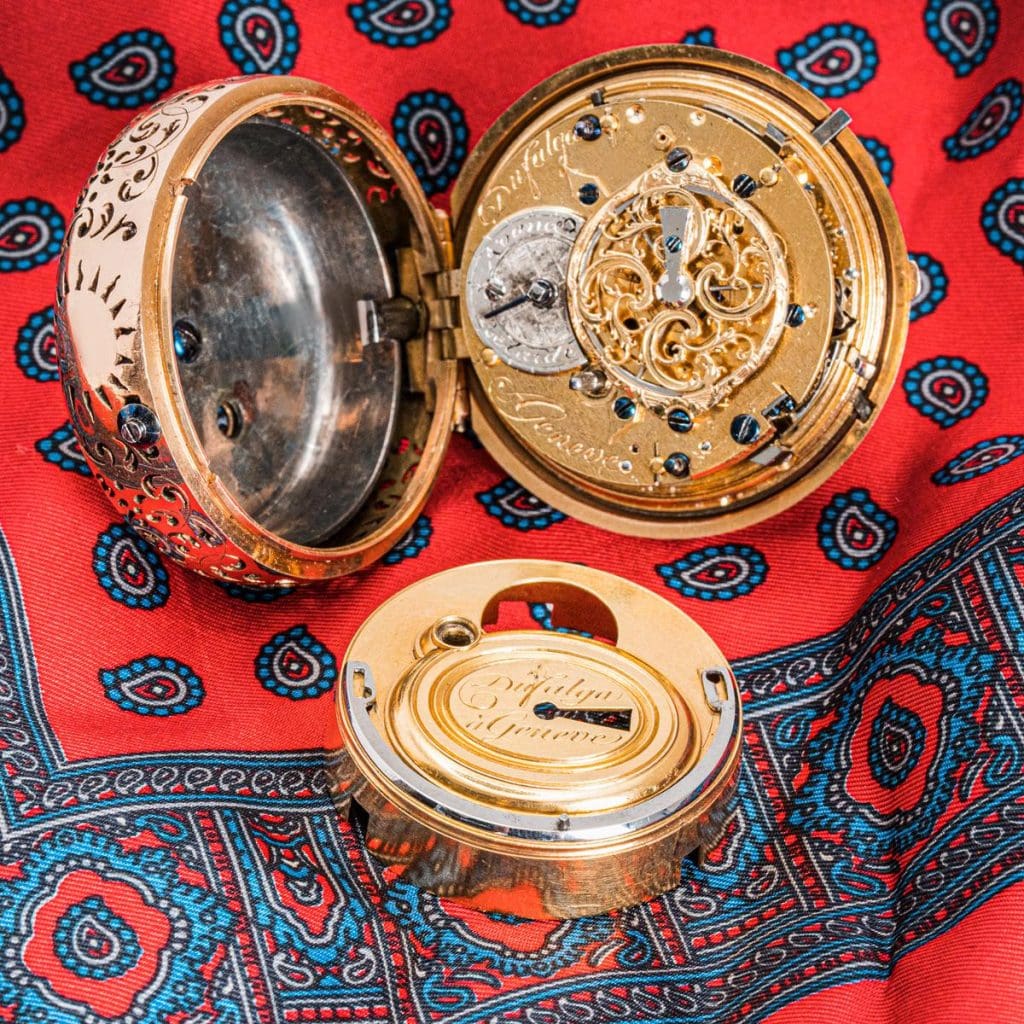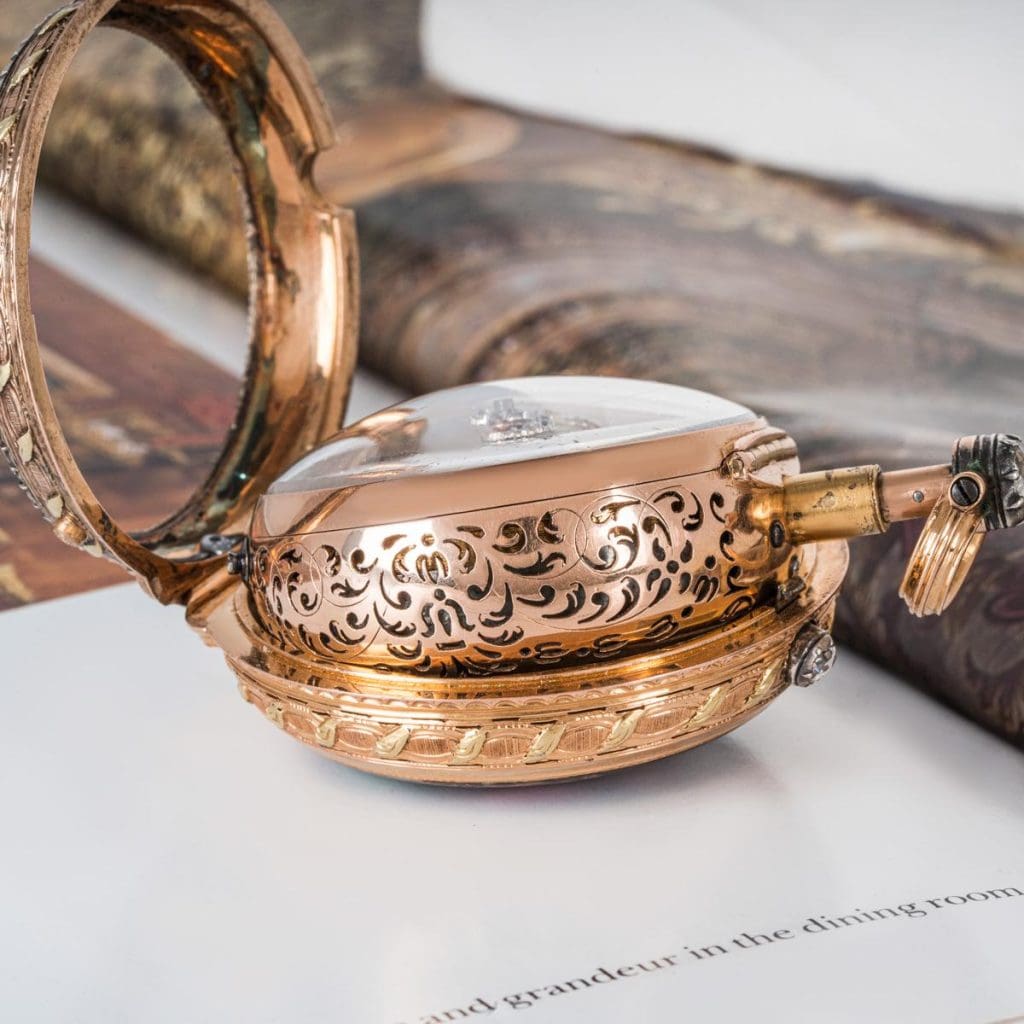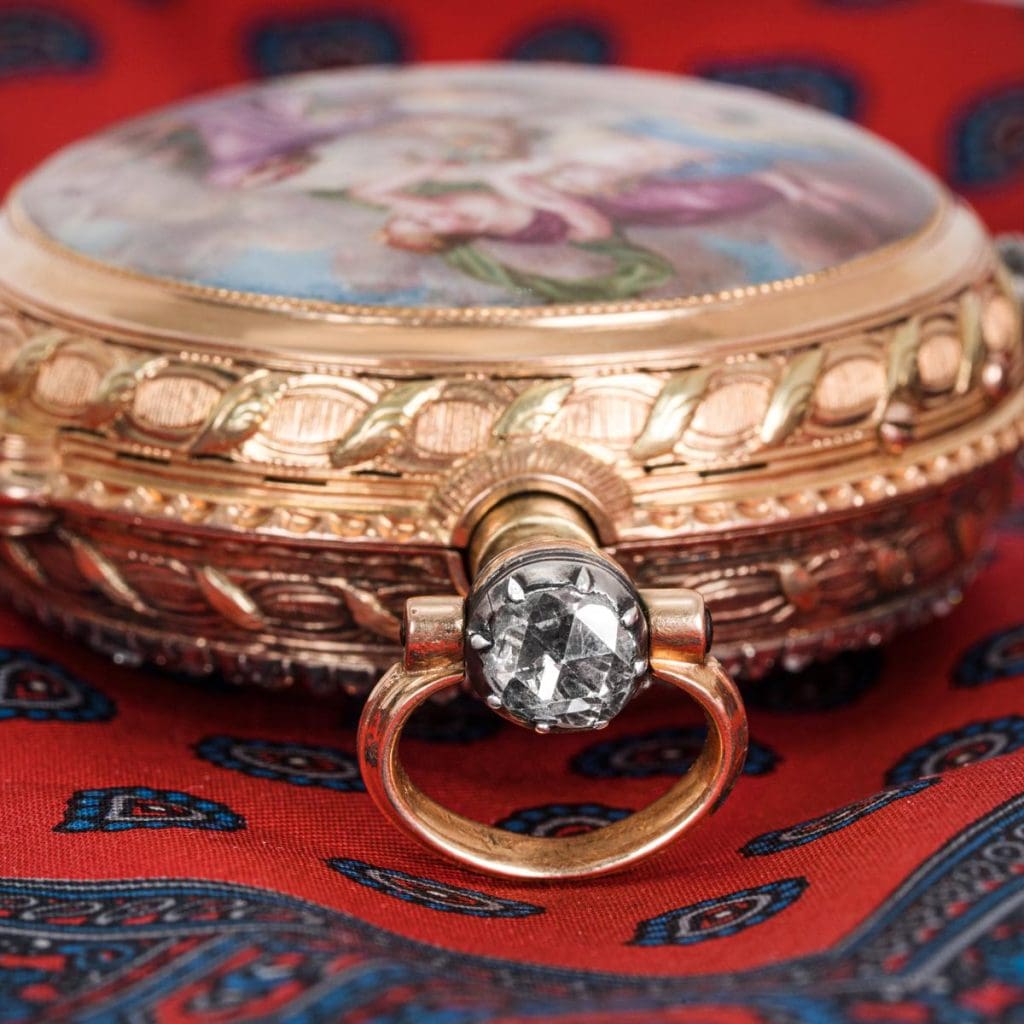Pocket watches have been a staple accessory for centuries, serving as a status symbol for the wealthy and a practical tool for the working class. While their popularity may have dwindled in recent years with the rise of technology, these intricate timepieces hold a rich and diverse history. From being cherished possessions of royalty and high society to becoming essential tools for railroad workers, antique pocket watches have held a significant role in various aspects of society. In this article, we will delve into the fascinating journey of pocket watches, uncovering the diverse uses and significance they held throughout history. From their elegant designs to their practical functionality, these timepieces have not only stood the test of time but also offer a glimpse into the evolution of society and technology. So, let us take a step back in time and explore the journey of pocket watches, from their humble beginnings to their enduring legacy in the modern world.
Timekeeping tool for monarchs and nobility.
Throughout history, pocket watches have served as essential timekeeping tools for monarchs and nobility. These meticulously crafted timepieces were not only elegant accessories but also practical instruments for keeping track of time in a world where punctuality and precision were of utmost importance. The exquisite craftsmanship and intricate mechanisms of antique pocket watches were a testament to the status and wealth of their owners. From ornate gold cases adorned with precious gemstones to intricate engravings and enamel work, these timepieces were designed to be both functional and visually stunning. Monarchs and nobility relied on pocket watches to manage their schedules, coordinate events, and maintain a sense of order in their busy lives. These timepieces were symbols of power and authority, reflecting the prestige and sophistication of the individuals who owned them.

Essential for train schedules in 19th century.
In the 19th century, antique pocket watches played a crucial role in the efficient and safe operation of train schedules. As the railroad industry rapidly expanded, the need for accurate timekeeping became paramount. Train schedules relied on precise timing to ensure trains arrived and departed on schedule, preventing collisions and maintaining a smooth flow of transportation. Antique pocket watches, with their reliable mechanical movements and precise timekeeping capabilities, became indispensable tools for railroad workers. These timepieces were not only used by station masters and conductors to synchronize train departures and arrivals but also by engineers to monitor train speed and maintain accurate schedules. The robust construction and durability of antique pocket watches made them ideal timekeeping devices in the rugged and demanding environment of the railway. The importance of these timepieces in ensuring the smooth operation of train schedules cannot be overstated, making them an essential tool in the 19th-century railroad industry.

Fashion accessory for wealthy elite.
As history progressed, antique pocket watches became more than just practical tools for the working class. They transformed into luxurious fashion accessories favored by the wealthy elite. The intricate craftsmanship and elegant designs of these timepieces made them highly sought after by those who wanted to showcase their status and impeccable taste. Adorned with precious metals, gemstones, and intricate engravings, antique pocket watches became symbols of wealth and sophistication. The elite would proudly display these timepieces, attaching them to ornate chains and keeping them close in their pockets or fastened to their clothing. These exquisite accessories not only served as functional timekeepers but also as prestigious symbols of social standing and refinement. The fashion-forward elite would often commission custom-made pocket watches, incorporating personal touches and unique embellishments to further elevate their exclusivity and individuality. The allure and prestige associated with antique pocket watches as a fashion statement for the wealthy elite has continued to captivate collectors and enthusiasts in the modern era.

Key element in military operations.
Key element in military operations, antique pocket watches have played a vital role throughout history. These timepieces provided military personnel with a crucial tool for coordinating and synchronizing their movements and actions. In the era before advanced communication systems, pocket watches served as precise and reliable instruments for timekeeping, allowing commanders to issue orders and coordinate tactical maneuvers with precision. The accuracy and portability of antique pocket watches made them indispensable in the field, ensuring that military units operated in unison and executed their strategies with precise timing. Their durability and resistance to harsh conditions made them reliable instruments even in the most challenging environments. From coordinating attacks to planning logistics, antique pocket watches proved themselves as essential assets in military campaigns, highlighting their significance as a key element in ensuring the success and effectiveness of military operations.

Symbol of status and prestige.
Throughout history, antique pocket watches have also served as a symbol of status and prestige. These timepieces were not only functional tools but also luxurious accessories that were highly coveted by the elite. Owners of antique pocket watches demonstrated their wealth, sophistication, and refined taste. These timepieces were often intricately designed, adorned with precious metals, gemstones, and intricate engravings, further enhancing their allure. Possessing an antique pocket watch was a clear indication of one’s social standing, serving as a distinguished accessory that set individuals apart from the crowd. The ownership of such an exquisite timepiece was a statement of power, elegance, and discernment, making antique pocket watches a coveted symbol of status and prestige throughout history.
Used by pioneers and settlers.
From the untamed frontiers to the rugged trails of exploration, antique pocket watches were embraced by pioneers and settlers as an essential tool for survival and navigation. These timepieces allowed individuals to keep track of time, aiding in coordinating daily activities and ensuring timely arrivals and departures. In an era without modern technology, where accurate timekeeping was paramount, the reliability and precision of antique pocket watches were unmatched. Pioneers and settlers relied on these timepieces to synchronize their efforts, from coordinating farming and hunting activities to ensuring timely departures on long journeys. The durability and sturdy craftsmanship of antique pocket watches made them suitable companions for individuals braving the harsh conditions of uncharted territories. Whether it was a pioneer carving a new path or a settler establishing a homestead, antique pocket watches played a vital role in their daily lives, serving as a reliable timekeeping companion on their ventures into the unknown.
Indispensable for Victorian gentlemen.
Victorian gentlemen were renowned for their refined tastes and strict adherence to social etiquette. In this era of elegance and sophistication, antique pocket watches became an indispensable accessory for the Victorian gentleman. These timepieces not only served a practical purpose of timekeeping but also symbolized status and wealth. Crafted with intricate designs and adorned with precious materials, antique pocket watches were often passed down through generations as heirlooms. Victorian gentlemen cherished their pocket watches, meticulously winding and adjusting them to ensure accurate timekeeping. Whether attending important social gatherings, conducting business affairs, or simply maintaining punctuality in their daily routines, these timepieces were a symbol of utmost punctuality and refinement for the Victorian gentleman.

Practical tool for workers’ shifts.
In addition to their association with Victorian elegance, antique pocket watches also found practical use in various professional settings throughout history. One such practical application can be seen in the realm of workers’ shifts. From factory workers to railroad employees, antique pocket watches provided a reliable and portable tool for keeping track of time during demanding work schedules. With their precise movements and sturdy construction, these timepieces ensured that workers could efficiently coordinate their tasks and adhere to strict schedules. The pocket watch became an essential tool, allowing workers to synchronize their efforts and maximize productivity in industries that heavily relied on specific time intervals. Its durability and accuracy made it an invaluable companion for workers across different professions, highlighting the versatility and practicality of antique pocket watches beyond their aesthetic appeal.
Valuable heirloom for families.
As time passed and the industrial revolution brought about significant social and economic changes, antique pocket watches took on a new role as treasured heirlooms within families. Passed down from one generation to the next, these timepieces became symbols of heritage and tradition, connecting family members to their ancestors and their stories. The value of an antique pocket watch goes far beyond its monetary worth; it carries with it a sense of sentimental value and emotional significance. These timepieces serve as tangible reminders of the past, preserving memories and experiences for future generations. Whether it’s the watch that accompanied a great-grandfather in his daily pursuits or the one that witnessed a grandmother’s milestones, owning an antique pocket watch becomes a cherished link between the past, present, and future within a family. Its enduring beauty and craftsmanship make it an exquisite and lasting heirloom that can be appreciated and treasured for years to come.















Significant role in industrialization process.
Throughout the industrialization process, antique pocket watches played a significant role in the development and efficiency of various industries. As factories emerged and production lines became more prevalent, these timepieces served as essential tools for coordinating and synchronizing operations. The precise timekeeping of pocket watches allowed workers to adhere to strict schedules, ensuring that tasks were completed in a timely manner. Furthermore, pocket watches were often used by supervisors and managers to monitor and regulate work hours, increasing productivity and maintaining a structured work environment. By facilitating the synchronization of activities and promoting punctuality, antique pocket watches became indispensable instruments in the industrialization process, contributing to the overall advancement and success of various industries.
Throughout history, antique pocket watches have served as both a functional timepiece and a symbol of status. From royalty to railroad workers, these intricate and beautifully crafted objects have played a significant role in various industries and social classes. Today, they continue to be admired and collected by enthusiasts and serve as a reminder of the rich and diverse history behind them. As we delve deeper into the past, we discover the fascinating and varied uses of antique pocket watches, showcasing their enduring appeal and timeless allure.
FAQ
How did antique pocket watches symbolize status and wealth among royalty in history?
Antique pocket watches symbolized status and wealth among royalty in history due to their intricate craftsmanship, precious materials, and exclusivity. Owning a pocket watch was a sign of sophistication and social standing, as they were often custom-made for royalty and nobility, featuring elaborate designs and expensive gemstones. Their functionality and precision also highlighted the owner’s refinement and connection to the latest technologies of the time. Displaying a pocket watch was a way for royalty to showcase their wealth and position in society, making it a coveted accessory among the elite.
What were some of the key technological advancements that made antique pocket watches more accessible to the general population?
The key technological advancements that made antique pocket watches more accessible to the general population were the development of mass production techniques, standardized parts, and the invention of keyless winding systems. These advancements allowed for increased production efficiency, lower costs, and easier operation, making pocket watches more affordable and widespread among the public.
How did the introduction of standardized timekeeping and railway schedules impact the popularity and use of antique pocket watches?
The introduction of standardized timekeeping and railway schedules led to a decrease in the popularity and use of antique pocket watches. People began relying more on accurate and convenient timepieces such as wristwatches and clocks that were synchronized with the new time standards. The precision and efficiency offered by these modern timekeeping methods made antique pocket watches less practical for everyday use, causing a decline in their popularity and eventually leading to them becoming more of a collectible or vintage item rather than a functional timepiece.
What were some of the unique features and designs of antique pocket watches that catered to specific professions, such as railroad workers?
Antique pocket watches designed for railroad workers often featured specific features such as a high-contrast dial for easy reading, seconds hand for precise timekeeping, and a robust case to withstand rough conditions. Additionally, watches designed for other professions like military personnel might have included luminous dials for nighttime visibility or extra protection against water and dust. These specialized designs catered to the needs and requirements of specific professions, ensuring accuracy and reliability in timekeeping.
How have antique pocket watches evolved in terms of design, materials, and functionality over the centuries?
Antique pocket watches have evolved significantly in design, materials, and functionality over the centuries. Initially crafted with intricate engravings and ornate cases, they transitioned to simpler designs in the 19th century. Materials shifted from silver to gold, and later to stainless steel. Functional enhancements included the addition of complications like chronographs and moon phases. The introduction of quartz movements in the 20th century revolutionized accuracy. Today, antique pocket watches remain prized for their craftsmanship and historical significance, reflecting centuries of design innovation and technological advancements.
